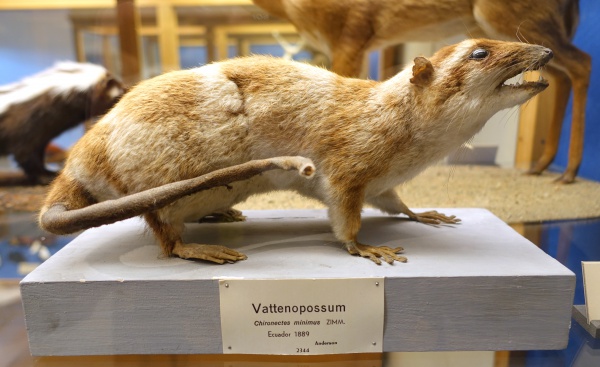Facts About Water opossum
The water opossum, also known as the yapok, is a fascinating marsupial that distinguishes itself within the animal kingdom. As the sole extant species in the genus Chironectes, it belongs to the family Didelphidae. This semiaquatic creature is found in freshwater habitats from Mexico to Argentina, spanning Central and South America.
One of the most intriguing aspects of the water opossum is that both males and females possess pouches—a rarity among marsupials. These animals are primarily nocturnal, making their homes in burrows along riverbanks. Their diet mainly consists of aquatic prey such as fish and crustaceans, which they hunt with adept skill.
The name "yapok" is believed to originate from the Oyapok River in French Guiana. Physically, these animals are small, with a striking appearance marked by marbled grey and black fur and distinctive black facial markings. Their hind feet are webbed, which makes them excellent swimmers. The tail is another unique feature—furred at the base and yellow or white at the tip, aiding them in navigation through water. Their fur is water-repellent, and the symmetrical webbing on their hind feet, along with the watertight pouch, are perfect adaptations for their aquatic lifestyle, ensuring their young remain dry while swimming.
Water opossums reproduce in December, and after a short gestation period of 12-14 days, the female gives birth to a litter of 1-5 young. These offspring remain in the mother's pouch until they are ready to venture out on their own.
Fossil records indicate that water opossums have existed since the Pliocene Epoch, with subfossil fragments discovered in Brazil and Argentina providing a glimpse into their ancient past.
There are several subspecies of the water opossum, including Chironectes minimus argyrodytes, Chironectes minimus langsdorffi, Chironectes minimus minimus, and Chironectes minimus panamensis. These subspecies differ in their geographic distribution and may exhibit slight variations in their physical characteristics.

 Belize
Belize